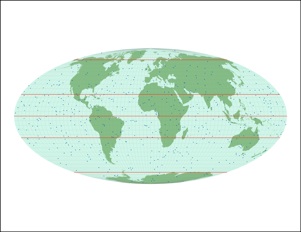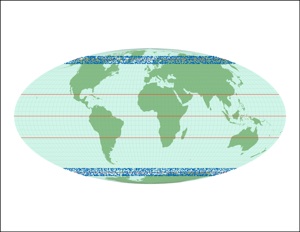The Five Millennium Catalog of Solar Eclipses by Fred Espenak and Jean Meeus is a comprehensive survey of eclipses from the years -1999 to 3000. The digital publication of this catalog can be found at http://eclipse.gsfc.nasa.gov/SEpubs/5MCSE.html
A summary table listing key attributes of this catalog is at http://eclipse.gsfc.nasa.gov/5MCSE/5MCSEcatalog.txt. This table contains spatial data in the form of latitudes and longitudes for the points of greatest eclipses of all eclipses in the span of five millennium. Because I work in the GIS industry, my first instinct is to map that data and see if any spatial patterns can be discerned. An apparent pattern is indeed present, but only for partial solar eclipses.
The red lines on these maps are the Arctic Circle, Tropic of Cancer, Equator, Tropic of Capricorn, and the Antarctic Circle. The graticule (lines of latitude and longitude) is shown at 5 degree intervals. The points of greatest eclipse are blue dots.
Click on any of the maps to view them in high-resolution.




